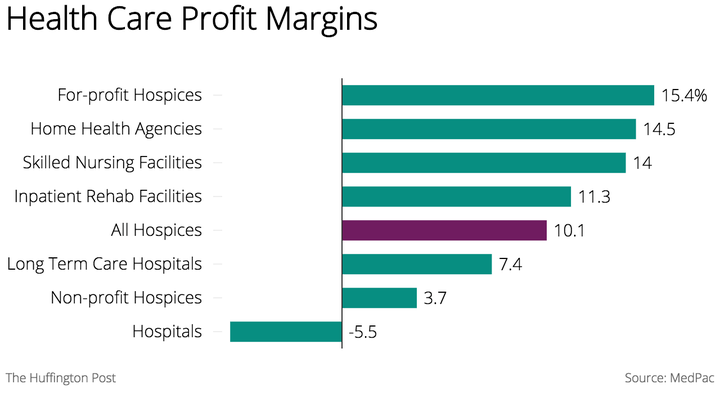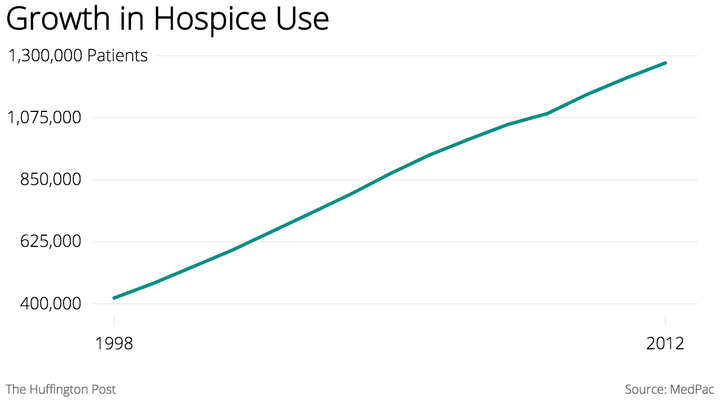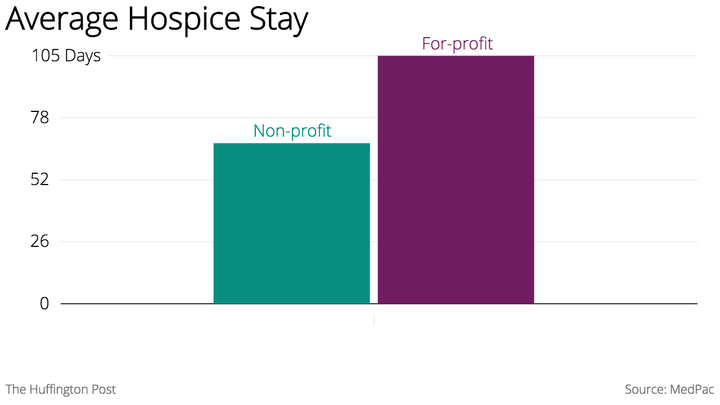Some of the most financially successful health care providers are those whose patients usually die.
For-profit hospices saw profit margins exceed 15 percent in 2012, according to a new report from the Medicare Payment Advisory Commission, known as MedPAC, which advises Congress on health policy. No other Medicare-financed health service was as profitable.
While making money is the stated ambition of most businesses, the success of for-profit hospices has in some cases come at the expense of patients, a 2014 investigation by The Huffington Post found. The new data is likely to give new ammunition to critics of the current payment system, which MedPAC and others have said incentivizes hospices to cherry pick the healthiest patients in order to boost gains.

Hospice is a service for dying people who have been diagnosed with a terminal illness and certified by a doctor as likely having six months or less to live.
As recently as 15 years ago, most hospice providers were nonprofit, operated as charitable concerns. Now, roughly two out of every three hospices are operated as for-profits, often by large, national chains. According to the MedPAC report, there were 2,411 such providers in 2013, up from about 650 in 2000.
The rapid expansion of hospice is in part a function of evolving cultural attitudes about dying. The terminally ill and their families are increasingly opting for the promise of a humane, painless death in a setting of their own choosing, usually their own home, over painful treatments administered in a hospital. More than 1.3 million people each year spend time in the care of a hospice, and many families later rave about the compassion shown by nurses and other hospice staff.

But as the HuffPost investigation found, hospice growth is also a function of aggressive marketing strategies -- and in some cases, blatantly illegal recruiting tactics -- pursued by for-profit providers.
In dozens of lawsuits, federal prosecutors have accused hospice companies -- including almost all of the largest players -- of billing fraud, alleging they enrolled patients who didn't qualify and signed them up for extra-expensive levels of care.
Some hospice families claim they were pressured into hospice treatment without fully understanding that doing so meant forgoing curative treatment, and that their loved one was mistreated or ignored. For-profit hospice providers have disputed these claims, even as they have paid out hundreds of millions of dollars to settle fraud lawsuits, brought by whistleblowers and later taken up by the federal government.
Though regulators and Congress have taken some steps to increase oversight and accountability, hospices remain under-regulated in comparison to other health providers. Hospices that break Medicare health and safety rules, for example, are almost never punished.
MedPAC, meanwhile, has warned for years that misaligned incentives in the industry are encouraging hospices to enroll healthier patients -- and those that don’t belong at all -- in an effort to boost their billings.
Almost all hospice revenue comes from Medicare. In most instances, Medicare reimburses hospices on a flat per-day basis, about $160, with payouts adjusted based on location. A hospice's costs are the highest at the beginning of a patient's enrollment and again at the end. The days in the middle -- when a care routine is established -- are when hospices profit the most. As a result, hospices make more money from patients who live a long time than those who die quickly.
Medicare data suggests that for-profit hospices actively seek out healthier patients in order to book greater profits. One way they do that is by admitting a greater proportion of patients with diseases like dementia or alzheimer's, where predicting the end of life is often uncertain. Nonprofits, in turn, are more likely to serve short-living patients, such as those with late-stage cancer, where death is imminent and the cost of care is more expensive.
Not surprisingly, Medicare data also shows that patients at for-profit hospices live longer than those at nonprofits -- a trend that medical experts say is not a function of quality of care, but of patient selection.

In the course of investigating the hospice industry, HuffPost spoke with families who said they were coerced into accepting hospice for a loved one, without fully understanding the consequences. Hospice nurses and other professionals said they had tended to patients healthy enough to play golf or drive to the shopping mall -- allegations mirrored in many private and federal lawsuits. Some said they were pressured by administrators to keep patients on service, even if they had shown improvement and no longer qualified under Medicare rules.
Resources expended to recruit patients came at the expense of providing quality care in some cases, hospice insiders claim.
Beginning in 2009, and continuing every year since, MedPAC has called on Medicare’s regulator to change the incentive structure to discourage the cherry-picking of longer-living patients. Just recently, that regulator, the Centers for Medicaid and Medicare Services, finally took the advice -- in part.
In May, the regulator proposed a new structure for the 2016 fiscal year that would pay providers about $40 less per day for each day a patient stayed on the service after 60 days. In a letter commenting on the proposal, MedPac described the adjustment as a “positive step,” and also “modest and incremental.”
In other words, a step in the right direction, but a small one.